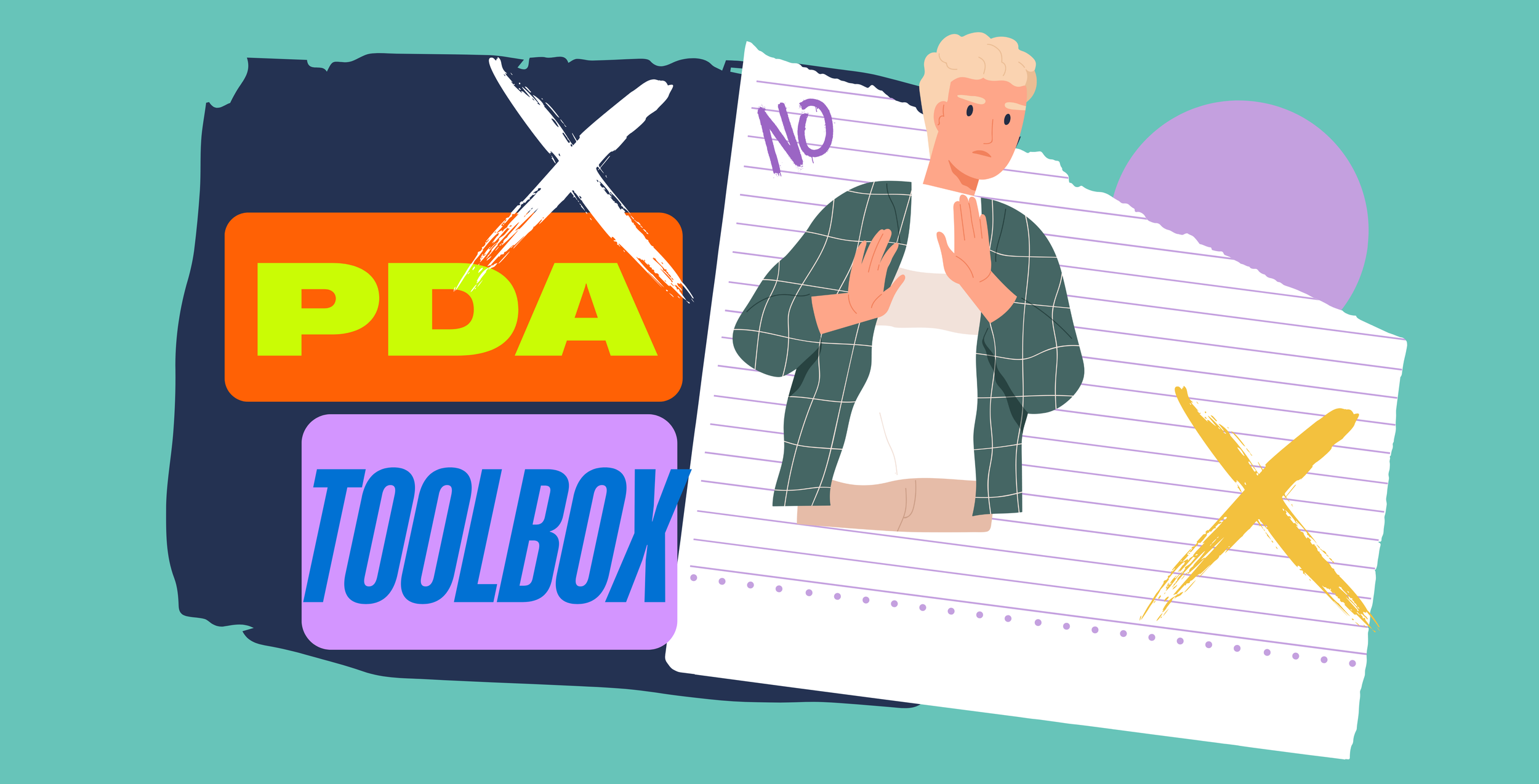PDA Toolbox
PDA?… Public displays of affection? Nope. Pathological Demand Avoidance. Let’s delve a little deeper into this complex subtype of autism…
Hi! I’m a 40 year old mom to an incredible 7 year old daughter. I do not have any degrees in therapy or letters behind my name. This article contribution is strictly from our lived day to day life. It’s personal. It’s individual. I do not have all the answers. I consider myself a life long learner and hope that while on our journey, others may gain insight, comfort and find they are not alone.
A quick definition behind the big word:
Coined by British professor and phychiatrist Elizabeth Newson, describes individuals on the autism spectrum who display obsessive resistance to everyday demands and requests. The interpretation: a nervous system disability where internal and external demands cause one to be in constant panic.
I admittedly had never heard of PDA. I suspected my little one was on the spectrum, but the supports and tools we used didn’t quite fit. PDA checked a different box.
CONNECTION.
This was the first tool in our box. Those with a PDA profile crave safety. With demands all around, which create panic, they need authentic assurance that you will be, do and avail yourself of whatever need they have, whether that need is real or seemingly superficial.
For us this meant providing snacks, water, entertainment, snuggles and more on demand…whenever it was asked for or perceived, even if it didn’t feel necessary or convenient . Exhausting is an understatement. But once that trust is formed, being in demand, becomes less demanding on you as their safety zone builds.
Sometimes at their request, just being in the same room is all the connection that is needed.
LOW DEMAND.
This is the Swiss Army knife within the PDA toolbox. Here are the multifunctional strategies we utilize: declarative language, can’t not won’t, meet them where they are at, permission to ignore “societal norms.”
Life does not stop and things still need to be done. Below are quick examples not an exhaustive list that may help broach this approach.
Declarative Language: put on your coat, it’s time to go VS. brr it’s cold outside, I’m going to wear my coat just in case. I wonder if you would like macaroni and cheese or spaghetti…
Can’t not won’t: this one takes a while to identify, but it’s ok to experiment and LET GO. If the shoes are in the hallway or the snack wrapper is on the coffee table, your child may not have enough reserve to put the item where it goes. They are not being defiant. Give grace, do the task. It will get better.
Meet them where they are at: This marries well with the above. If they need to bum on the couch, bum with them. If they can wash their hair but not their body, can you do it for them? Can it be skipped altogether? If they can do a playdate, is it where they naturally thrive instead of the forced typical types of play?
Ignore societal norms: No matter how hard any one individual tries, there is always a measure of judgement. It’s ok to be authentically you and show others that different is beautiful. Are greetings expected? We live in a culture where hello, how are you is the norm, but that may be too demanding. Please and thank you, we’ve been taught are expected manners. Could a nod or a fist bump be equally accepted?
OFFER AUTONOMY.
This is the peanut butter to the jelly when coupled with low demand. PDAers crave equality. Can you make them apart of the decision making process? Where the play date is and with whom? What’s on the menu for dinner? This slight shift feels less overwhelming and gives them just enough “power” to face the next.
INJECT HUMOR.
This is the last tool I’d like to include for now. Despite the changes you’re implementing and the stressors, laughter is the best medicine. PDA identified individuals thrive on pretend, make believe, off the wall scenarios to navigate the demands that creep into panic. Could you use an accent? Could you share a time when you faced a similar experience and brush it off with silliness? Or perhaps pretending to be animals as you figure out a problem?
SELF CARE.
I will leave that one for part two.
Thanks for following along with me. I am open to connection and fostering needs of those in the community who have just discovered PDA or have been on the journey and would like additional support. I can be reached at bjacob@waytogrowpediatrics.com
Minute by minute,
Brie
The Way to Grow Pediatric Therapy Team 🌟
about our featured writer:
Brie is one of our awesome office assistants here at Way to Grow! She has a background in communications, but life has taught her to look at the world in different colors + has a passion to inspire and support other parents of kids with PDA! Her “why” is her amazing daughter Isla. After learning of her neurodivergence and letting the diagnosis sink in, she has embraced this culture and advocates for her fiercely as well as for others on the same journey. Bri has a special zest for life, and is a lover of food, fun, and friends!


